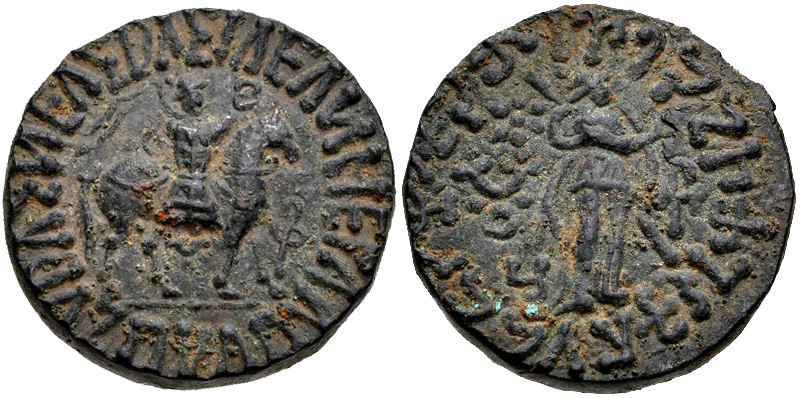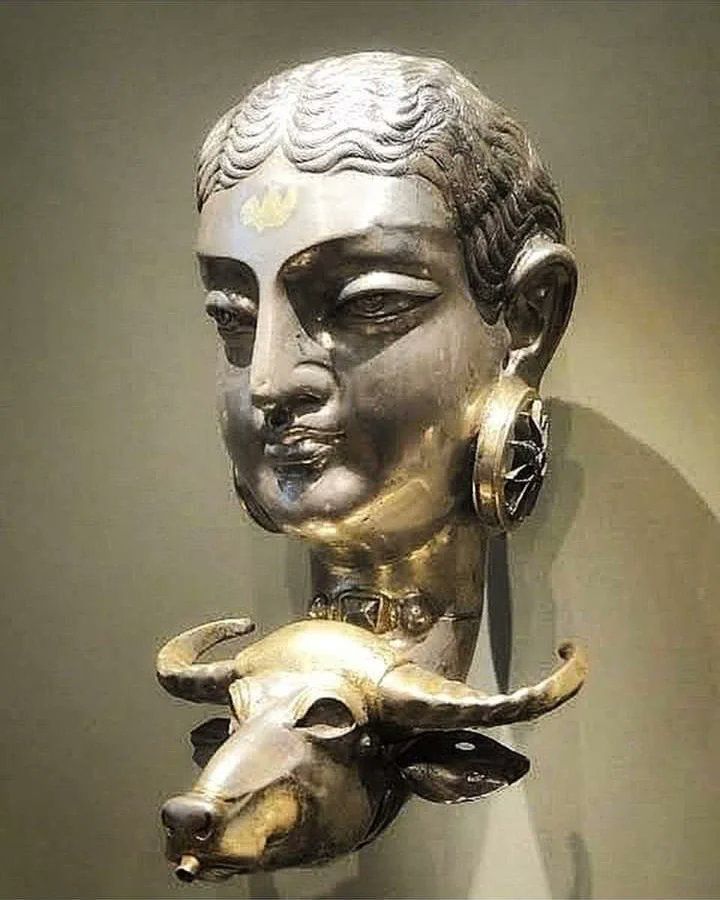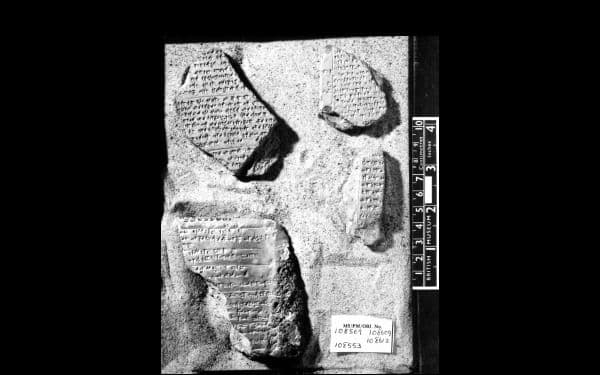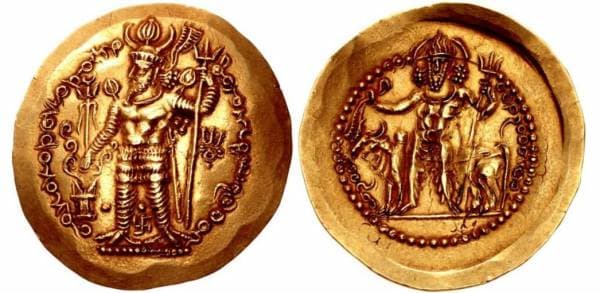Hinduism Outside India
“According to the Syrian writer Zenob, there was an Indian colony in the canton of Taron on the Upper Euphrates, to the west of Lake Van, as early as the second century B.C. The Indians built there two temples containing images of gods about 13 and 22 ft. high. When, about A.D. 304, St. Gregory came to destroy these temples, he was strongly opposed by the Indians. But he defeated them and smashed the images, thus anticipating the iconoclastic zeal of Mahmud of Ghazni.”
Note that, Zenob was an ancient Syrian historian/hagiographer ~300-400AD
Source: The History and Culture of the Indian People, Volume II: The Age of Imperial Unity, RC Mujumdar (pages 633-634)
This is the coin of Hindu king Aspavarma of Apracha Dynasty. They ruled Gandhara in first century CE. Aspvarma’s grandfather was general Vispavarma.

Interestingly, their names show their Iranic ethnicity Aspa (Sanskrit Ashva) and Vispa (Sanskrit Vishva). Not only did they adopt Hinduism/Buddhism, they also seem to have considered themselves Kshatriya as seen by their ‘Varma’ surname.
Note that Both Aspa and Vispa are Iranic Avestan words. Aspa means horse and Vispa means world. Sanskrit श्व becomes स्प in Avestan.
While one might wonder if there were natives of Gandhara as their iranian ethnicity hasn’t been proven as of now. The fact is that Aspa and Vispa are perfectly Avestan names. Natives of Gandhara do not use such names.
Source:
Goddess Durga (Mahiśa-mardini) excavated from Deylaman, Iran. It was initially described as the head of the ancient Iranian goddess Drvaspa, attached to a spout in the form of a bull’s head.

The cult of this Goddess was very popular with the Hephthalites, which suggests a political motive behind its patronage. The invading Hunnic tribes often had a Buffalo as their tribal symbal.
The indication of this goddess as Durga is hinted from its Shaivite iconography of inverted crescents with a triangle painted on her forehead. It was actually excavated from Kabul which was likely a stronghold of Hinduism at this point. Even the animal head is specifically an Indian buffalo and not a bull as was likely understood before!
Source:
- An Indo-Iranian Silver Rhyton in the Cleveland Museum
- https://x.com/LykosPagan/status/1795042666872238503
“St. Gregory appeared with 300 men to overturn their faith. The (Hindu) people flew to arms, and the first outbreak of the popular fury obliged St. Gregory to take refuge in a friendly castle. Both sides received reinforcements, desperate battles were fought, and over a thousand men fell. Artzan, the chief priest, and his son Demetr were slain in combat, having exhibited courage worthy of heroes. The Indians were overpowered, but they still implored that their idols might be spared. Six priests fell at the temple door, another died under torture without revealing the treasury of Demetr. The Christians then proceeded to break up the copper statues of the gods, which were 12 and 15 cubits high. The temples were razed to the ground, and on the site of Demetr’s temple, St. Gregory erected a church, while a wooden cross marked the place where Gisanê’s (Krishna) idol had stood. More than 5,000 idolaters submitted to baptism, and 438 persons, the sons of priests, or temple servants, who remained obdurate, had their heads shaved and were transported to Phaitakaran, near the shores of the Caspian”
Source: Kennedy, J. “The Indians in Armenia (130 BC-300 AD)” from The Journal of the Royal Asiatic Society of Great Britain and Ireland (1904): 309-314.
1380 BCE, 3400 Years Old Inscription of Treaty Between Hittite King Suppiluliuma I and Mittanni King Shattiwaza invoking Hindu Gods Mitra, Varuna, Indra, and Ashvins as Divine Witness. This Inscription Was Found In Bogazköy, Turkey. The translation of the inscriptions can be seen here

Majestic Shiva on the golden coin of Kushano-Sassanian emperor Peroz II.
Left: Peroz offers into holy fire. He holds a trident.
Right: A majestic Shiva holds a trident in one hand and Pāśa (noose) in the other. Nandi was also shown.
Provenance: Balkh(Bactria) Time: 305 AD

Kushano-Sassanians of Bactria and East Iran were devotees of Shiva. They inscribed him on almost all their coins. Peroz is an originally Iranic name. As Arabic did not have p(voiceless plosive) sound, the latter became a fricative. Peroz became Feroz. It is now hard to imagine a Hindu with the name Peroz/Feroz!
Source: https://twitter.com/BharadwajSpeaks/status/1462924470415360001